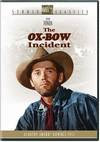Woman of the Year
Adam’s Rib
Pat and Mike
As you might have noticed, I have not discussed the actors in any of the previous movies that I have discussed. The reason being that while the acting in those films has been nothing short of excellent, I have chosen to focus on the content of the movies and not those portraying the characters. I am making an exception to this rule in this case because the star of the movies I am about to discuss represents for me not just an actress playing feminist roles, but because her personal life always has been a model for the feminist movement even before it was known as such.
However, I am not going to discuss the personal life of Katherine Hepburn, or her off-screen relationship with Spencer Tracy, her co-star in these three movies. For those of you who aren’t aware of Hepburn’s history, there are plenty of other sources that provide that information.
I also want to say that while the Hepburn-Tracy coupling produced some great comedies, I personally enjoy her comedic outings with Cary Grant more – especially the screwball romp Bringing Up Baby and the sophisticated The Philadelphia Story. But when it comes to films that focus on the relationship between man and woman and its affect on feminism, nothing beats the low-key comedies Woman of the Year (released in 1942 in black and white), Adam’s Rib (1949, b&w) and Pat and Mike (1952, b&w).
Woman of the Year begins with a feud between two colleagues from the same New York City newspaper – sports reporter Sam Craig and political columnist Tess Harding. This feud is carried out on the pages of their paper. The paper’s editor steps in and introduces his two employees to each other. Suffice it to say, the two become smitten with each other – Sam initially being attracted by a very unfeminist and somewhat vain act by Tess: straightening her stockings while sitting on a desk. Tess lets her interest show when after the meeting, as Sam rushes down a flight of stairs to catch up to her, she pops into his face after coyly hiding behind the wall at the bottom of the stairs and asks for a light for her cigarette.
Sam then asks her to attend a baseball game with him and by the end of it, Tess not only finds that she enjoys the game but also makes friends with several rough-and-tumble spectators. Tess reciprocates by asking Sam to her apartment. Sam, who apparently thinks they will be alone, finds he is surrounded by Tess’ upper-crust guests and becomes particularly annoyed by her male secretary, Gerald. But the romance blossoms and they decide to marry.
However, problems for Sam arise immediately. The rushed wedding must take place in South Carolina, without the presence of Sam’s mother, to accommodate Tess’ diplomat father and famously feminist aunt. Then after the vows, Tess receives an important phone call that she must take and the wedding night is interrupted by a political refugee and his colleagues. During the ensuing months, the two see very little of each other because their competing schedules.
Then, Sam learns that Tess has adopted a refugee child. Although Sam wants children of his own, he does like the boy. Sam does not like, however, Tess’ apparent neglect of the child – neglect that is the result of her busy schedule. Nonetheless, Tess is nominated for a Woman of the Year award. On the night of the presentation, Tess mentions that the child will have to be left alone while they attend the ceremony. Angry about this further sign of Tess’ neglect, Sam refuses to leave the boy alone and while Tess is at the ceremony, he takes the child back to the agency from which he came. When Tess returns home with photographers to take pictures of the “happy” family, she is stunned to learn that Sam has apparently walked out on her and has returned the child. When Tess goes to retrieve the boy, it becomes obvious to her that he doesn’t want to go home with her.
Eventually, Tess decides she wants to win Sam back. She finds out where he lives and goes to the apartment, while he is sleeping, to prepare breakfast for him. This is her attempt to show him that she can be as a good wife as she is a feminist. Sam awakens to find her in the kitchen having difficulty making coffee and waffles. Sam, who appears amused by the failures, tells Tess that he really doesn’t care about that stuff – all he wants is for her to put her family ahead of anything else, to which she readily agrees.
In Adam’s Rib, two married attorneys – prosecutor Adam Bonner and defense lawyer Amanda Bonner – find themselves on opposite side of a case in which a woman is accused of shooting, but not killing, her philandering husband. And while all this is going on, Amanda is being wooed by their across-the-hall neighbor, Kip Laurie.
Of course, the case attracts a lot of publicity and after the first day of the trial, Adam tries to talk Amanda into bowing out – which she refuses to do. As the case continues, Amanda uses tactics of which Adam disapproves. For instance, Adam protests against a woman’s use of tears to elicit sympathy to her cause. Then, calling the tactic dishonest, he shows Amanda how easy it is to make tears fall from his eyes. Tensions between the two rise to the point that while Adam, at their apartment, is giving Amanda a massage and as they are discussing the trial, he smacks her rather hard on the bottom. She takes offense and walks out after kicking him in the shin.
Amanda wins the case and the woman is acquitted. On his way home after the trial, Adam – who has always been aware of Kip’s campaign to seduce his wife – sees Kip and Amanda in a mildly compromising position. He confronts them and threatens them with a gun. Amanda complains that Adam has no right to harm them because of jealousy. At that point, Adam pits the gun in his mouth and begins to chew it. The gun is made of licorice and Adam is satisfied that he has gotten Amanda to admit that the prosecution of the acquitted wife was justified.
Pat and Mike is the story of a female athlete and her manager. At the outset, Pat is engaged to a professor at the college where she works as a physical education instructor. She is a very good athlete in several sports – particularly golf and tennis – who freezes up whenever her overbearing fiancé, Collier Weld, is around. But Mike sees Pat’s potential during a golf tournament in which she and the legendary Babe Didrickson are competing. Pat has a chance to win the tournament, but Collier’s appearance at the final hole unnerves her and she winds up settling for second place. After the tournament, Mike is able to convince her to join his stable of athletes, which includes a boxer named Davie.
As the story progresses, Pat comes to trust the restrictions Mike places on her and Mike learns to appreciate Pat for more than her athleticism. For instance, when Davie begins losing confidence in himself, Pat restores it with a pep talk that calms his anxieties. When Mike questions her about the talk, Pat asks if she has done something wrong. Pat assures her that it was alright, giving her free rein to help any of his other athletes who come to her.
For me, the best scene of the movie is when Mike is confronted by three men who own a share of Davie and are upset that he didn’t throw a fight as they had requested. As Mike is prepared to take his beating, Pat comes to the rescue, disarms them of a blackjack and leaves them sprawled on the ground – to the delight of witnesses and the embarrassment of Mike.
Later during a tennis match, Mike notices that Pat loses her concentration when Collier is around. Mike confronts Collier and tells him to stay away from venues where Pat is competing. Collier refuses, claiming the rights of a fiancé. Then during a golf tournament, Collier shows up and again unsettles Pat. That evening, Collier sees Mike leaving Pat’s bedroom and becomes furious. Mike explains to both Collier and Pat that he always checks on his athletes after they go to sleep, closing windows and making sure they are tucked tightly into bed. Collier doesn’t buy it, however, and the engagement ends. Pat, however, seems to appreciate these things that she hadn't known Mike was doing.
The next day, Pat has to make a crucial putt and looks up to see Collier. Shaken, she then looks for Mike. His smile calms her and she easily sinks it. As they walk off the green it becomes obvious that these two people are headed for the altar.
What I like most about these three pictures is that although Katherine Hepburn portrays strong women in each, she also points out the faults of each. In Woman of the Year, she comes to understand that since she decided to have a family, that family should be at least as important – and if not, then more important – than her work. And gentlemen, this lesson should apply to you as well. In Adam’s Rib, she is forced to acknowledge that winning is not necessarily an accurate measure of right and wrong. And in Pat and Mike, she learns to overcome insecurities with the love and affection of a partner whom she knows loves and cares for her.
One final thought: Katherine Hepburn’s roles retain a fighting spirit that is best summed up at the end of Adam’s Rib. After learning that Adam may run for election to a county judgeship as a Republican, Amanda wants to know if the Democrats have selected their candidate for that post yet.
Ya gotta love that woman!
Saturday, February 21, 2009
Subscribe to:
Post Comments (Atom)






























































No comments:
Post a Comment